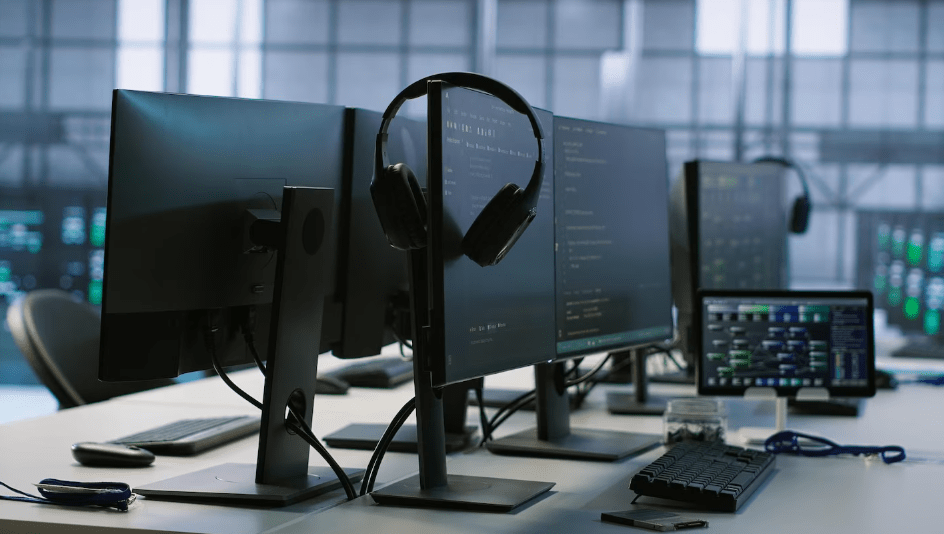What comes to mind when you think of a computer is often an elegant laptop or a tower desktop machine. However, the truth is that the machine you use every day is not just a screen and a box with a processor. It is a unified environment of gadgets, some of which are indoors and some outdoors, all of which combine to ensure you can work, entertain, or run your business. Hardware peripherals enter the picture here.
Technology experts are not the only category of people who need to understand more about computer hardware and hardware peripherals. Regardless of whether you are purchasing new hardware to put in your office, equip your classroom, or configure the machine you will use to play video games, it is always useful to know what every machine does, as it may save you money, ease compatibility, and make your environment much more efficient.
What Are Hardware Peripherals?
What are computer hardware peripherals? Simply explained, hardware peripherals are add-ons that are attached to your computer to either extend or enhance its capabilities. In contrast with the main elements, like the CPU, RAM, or motherboard, peripherals are not important to the basic functioning of a computer, but help in completing many tasks with ease.
A more standard definition used in industry by the IEEE defines peripherals as, simply, any secondary device that interfaces with the computer and interacts with it in input, output, or storage.
Imagine this – the CPU is the brain, yet the peripherals are the eyes, and the limbs are the hands. They make the computer see, hear, speak, remember, and communicate with the world.
Types of Hardware Peripherals
The types of hardware peripherals fall into several categories based on the role they play.
| Type | Examples | Function |
| Input Devices | Keyboard, mouse, scanner, joystick | Send data/instructions to the computer |
| Output Devices | Monitor, printer, speakers | Display or produce results from processed data |
| Input and Output Peripherals | Touchscreen, external drives | Can both send data to and receive data from the system |
| Storage Peripherals | USB drives, external HDDs, memory cards | Store and transfer data |
An example could be a company such as MBM Newtech, which has to handle several input and output peripherals, such as scanners and printers, which are one of the greatest examples of the peripherals that connect the digital and physical worlds.
Internal vs External Peripherals
Not all peripherals sit on your desk. Some live inside your computer’s casing. Let’s see internal vs external peripherals in detail –
- Internal Peripherals – Installed within the computer case. Examples –
- Sound cards
- Network interface cards (NICs)
- Graphics cards
- External Peripherals – Connected externally, usually via USB, HDMI, or wireless methods. Examples –
- Webcams
- External hard drives
- External DVD writers
Comparison Table: Internal vs External Peripherals
| Feature | Internal | External |
| Location | Inside the computer case | Outside the case |
| Installation | Requires opening the computer | Plug-and-play |
| Portability | Not portable | Portable |
| Upgrade Difficulty | Higher | Lower |
Functions of Peripheral Devices
The function of peripheral devices may be divided into three wide-ranging purposes –
- Strength of User Interaction – Keyboards, mice, and touchscreens ensure that the computers are very easy to use.
- Data Handling – Scanners, cameras, and storage devices are used to take data and store it.
- Output and Communication – Data on computers takes the form of printers, monitors, and speakers.
For example, MBM Newtech’s document scanning solutions use specialized scanners (input peripherals) to digitize physical records, which can then be stored securely and accessed instantly. The function of peripheral devices completed by our solutions is a game-changer for offices shifting to paperless systems.
Computer Hardware vs Peripherals
Core computer hardware includes the CPU, motherboard, memory (RAM), and storage (internal SSD or HDD). These are what make the system boot and run.
Peripherals, on the other hand, extend functionality. You could technically operate a server without a monitor, but to configure and use it efficiently, peripherals become essential.
As GeeksforGeeks puts it, “hardware is the machine itself – peripherals are the supporting cast.”
Examples of Peripheral Hardware Devices
Here’s a quick table of examples of computer peripherals and where you might use them –
| Device | Category | Use Case |
| Scanner | Input | Digitizing documents (e.g., MBM Newtech’s scanning services) |
| Printer | Output | Printing invoices, reports |
| Webcam | Input | Video conferencing |
| External HDD | Storage/I-O | Backing up project files |
| Touchscreen | Input/Output | Interactive kiosks |
| Game Controller | Input | Gaming consoles/PC gaming |
In education, hardware peripherals like projectors and document cameras make learning more visual. Other equipment, such as barcode scanners, makes businesses more efficient. In the case of gaming, the peripherals consist of high refresh monitors and mechanical keyboards.
How to Choose the Right Peripheral Devices
In selecting peripheral hardware devices –
- Compatibility – Check operating system and port availability.
- Purpose – A graphic designer needs a color-accurate monitor; a student might prioritize a lightweight printer.
- Connectivity – Wired vs wireless.
- Budget – Balance cost with features.
Quick Tips
- Students – Seek multi-purpose machines (print/scan/copy).
- Professionals – In the case of peripherals, those that improve the productivity of the job should be used, like ergonomic keyboards.
- Competitive players – Pay more attention to the performance (low-latency mice, high-refresh monitors)
MBM Newtech often assists businesses in choosing hardware peripherals that integrate seamlessly with their existing systems — a reminder that expert guidance can save a lot of trial and error.
Future of Computer Peripherals
The future is shifting towards –
- Wireless Hardware Peripherals – Bluetooth keyboard, wireless mouse, Wi-Fi wireless printers.
- Smart Accessories Devices – With in-built AI to automate.
- Ergonomic Designs – Hardware designed to reduce strain during long hours of use.
For companies like MBM Newtech, which already works in digital transformation, this means integrating peripherals that not only connect to computers but also connect to cloud systems for seamless workflows.
Conclusion
From keyboards to scanners, from sound cards to smart displays, hardware peripherals are the bridge between human intent and machine execution. They don’t just make computers more functional — they make them adaptable to countless different needs.
A student taking responsibility to create a budget setup, a gamer aiming to build the ultimate rig, or a company interested in the digitization of processes, equipping you with the knowledge of computer hardware and peripherals is necessary. And when you are only interested in document management, high-quality scanning, and printing, or printing, such firms like MBM Newtech can (and already do) ensure that you get peripherals that work effectively, securely, and in tandem with your current systems.




